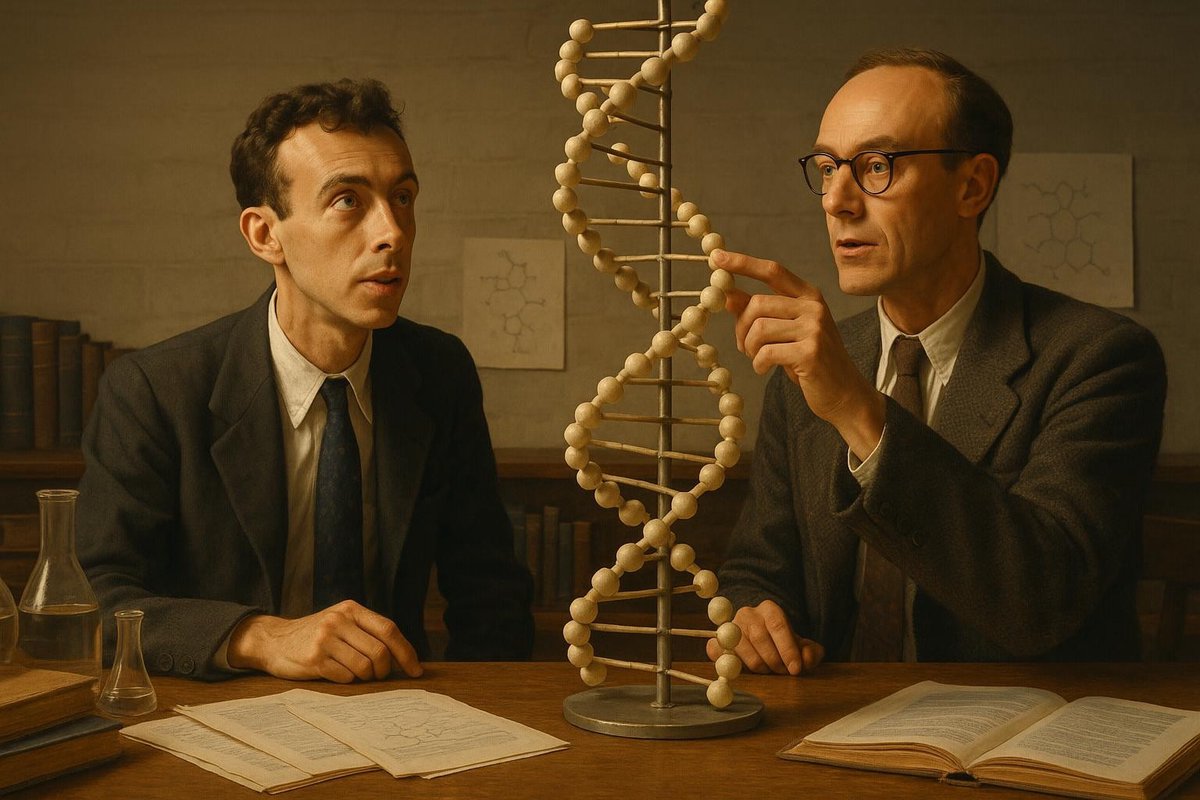
Introduction
Have you ever marveled at the precision with which modern medicine can pinpoint genetic disorders? It’s no wonder, given the profound impact of a pivotal moment in science—the discovery of DNA’s structure. This revelation not only unraveled the blueprint of life but also laid the groundwork for technological advancements that continue to affect our daily lives. As we explore this monumental discovery, let’s delve into the historical context and understand why this breakthrough mattered so much.
Hypothesis & Context
In the early 20th century, the scientific community was abuzz with questions about the nature of genes and heredity. Yet, the intricate architecture of life remained elusive. Scientists had long observed inheritance patterns, but the exact structure that dictated genetic inheritance was unknown. Enter the hypothesis: what if DNA, once thought to be a simple molecule, held the key?
- Gregor Mendel’s pea plant experiments laid groundwork for understanding heredity.
- The identification of DNA as a component of chromosomes by Johann Friedrich Miescher in 1869.
- Erwin Chargaff’s rules showed that DNA base pairs had specific ratios.
Interestingly, the social and cultural backdrop of post-war optimism and collaboration fueled rapid scientific exploration. The race to decode life’s instructions was on, with researchers like Rosalind Franklin and Maurice Wilkins making strides in X-ray crystallography, providing glimpses into DNA’s structural possibilities.
Setup & Method
Imagine a modest laboratory in Cambridge, 1953. Here, James Watson and Francis Crick, driven by curiosity and competition, painstakingly pieced together a model of DNA.
- Franklin’s X-ray diffraction images hinted at a helical shape.
- Watson and Crick utilized model-building techniques to hypothesize DNA’s double helix structure.
- Collaborative input from Linus Pauling’s previous work on protein structures.
Of course, science is rarely a solitary endeavor. The duo’s groundbreaking model was informed by the collective wisdom of their time. Watson once remarked, “We have discovered the secret of life.” Indeed, this was no mere hyperbole, as the double helix model was a revelation, offering a tangible explanation for genetic replication and mutation.
Results & Reactions
The unveiling of the double helix structure was met with both awe and skepticism. How could such a simple yet elegant design encode the complexities of life? The scientific community quickly embraced Watson and Crick’s model, recognizing its potential to explain genetic processes.
- The discovery was published in “Nature” in April 1953, sparking widespread acclaim.
- Debates over credit arose, particularly regarding Franklin’s contribution.
- The Nobel Prize in Physiology or Medicine was awarded to Watson, Crick, and Wilkins in 1962.
This breakthrough ignited a new era in biological research, emphasizing the importance of interdisciplinary collaboration. It wasn’t just about understanding DNA; it was about unlocking the potential to manipulate it, opening doors to genetic engineering and biotechnology.
Implications
Fast forward to today, and the echoes of DNA’s discovery reverberate through our technological landscape. The decoding of the human genome, CRISPR gene editing, and personalized medicine—all owe their existence to the unraveling of DNA’s structure.
- Genome sequencing has revolutionized biomedical research and diagnostics.
- CRISPR technology allows precise editing of genetic material, with vast implications for disease treatment.
- Biotechnology fuels industries from agriculture to pharmaceuticals, influencing economies worldwide.
Why does this matter? Because the discovery of DNA’s structure was more than a scientific milestone; it was a cornerstone that reshaped our understanding of life itself. It catalyzed advancements that touch every facet of our lives, from healthcare to ethics, challenging us to ponder the very nature of our humanity.
As we conclude this exploration, it’s clear that the discovery of DNA’s structure was a defining moment in science and technology. It transformed our understanding of genetics and set the stage for innovations that continue to shape our world.
Fuel Someone Else’s Curiosity
Have you found this journey through the history of DNA’s discovery enlightening? Share this insight with others and spark a conversation about how the past continues to influence our future. Together, we can fuel curiosity and inspire the next generation of scientific pioneers.

Leave a Reply